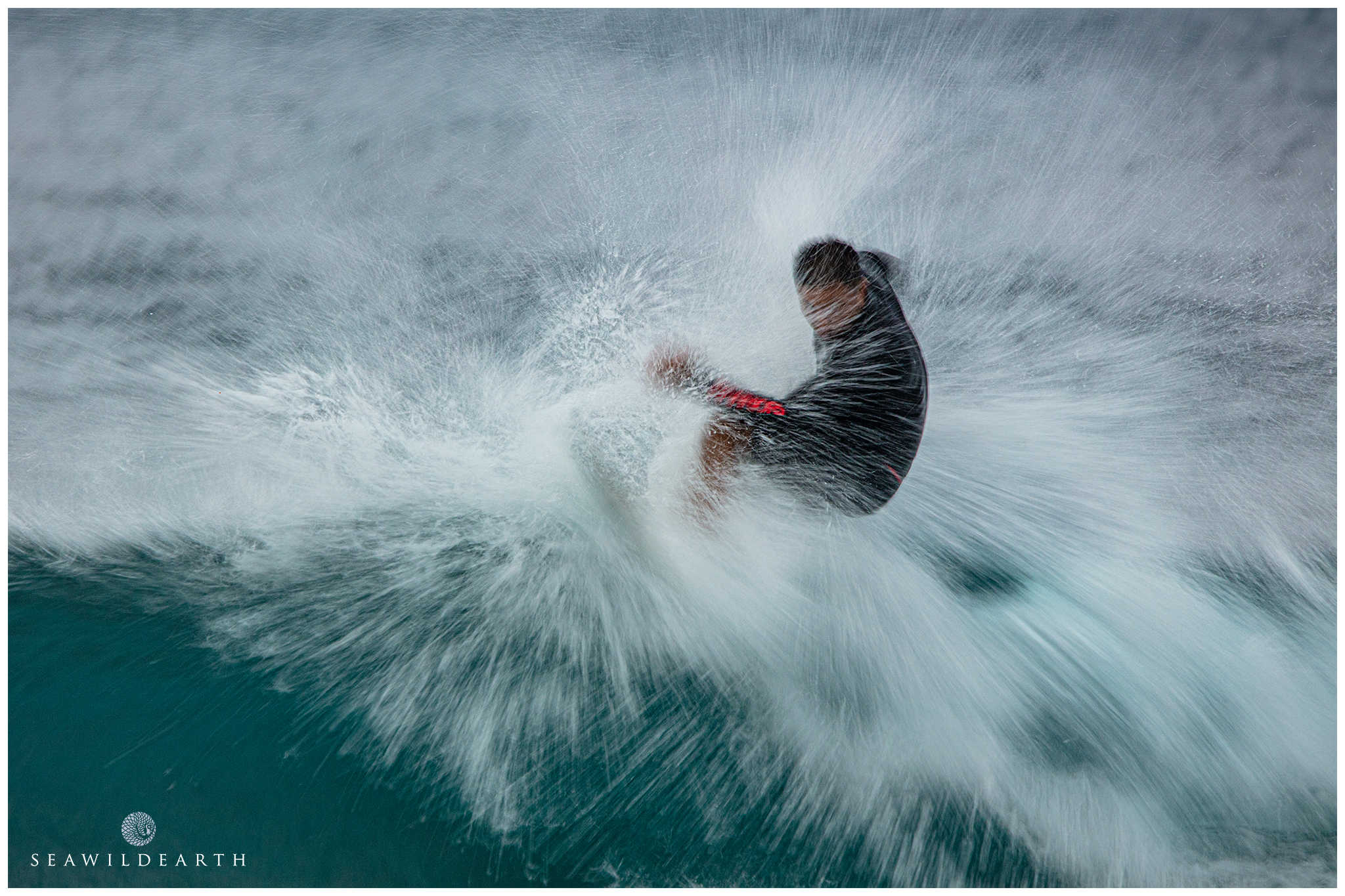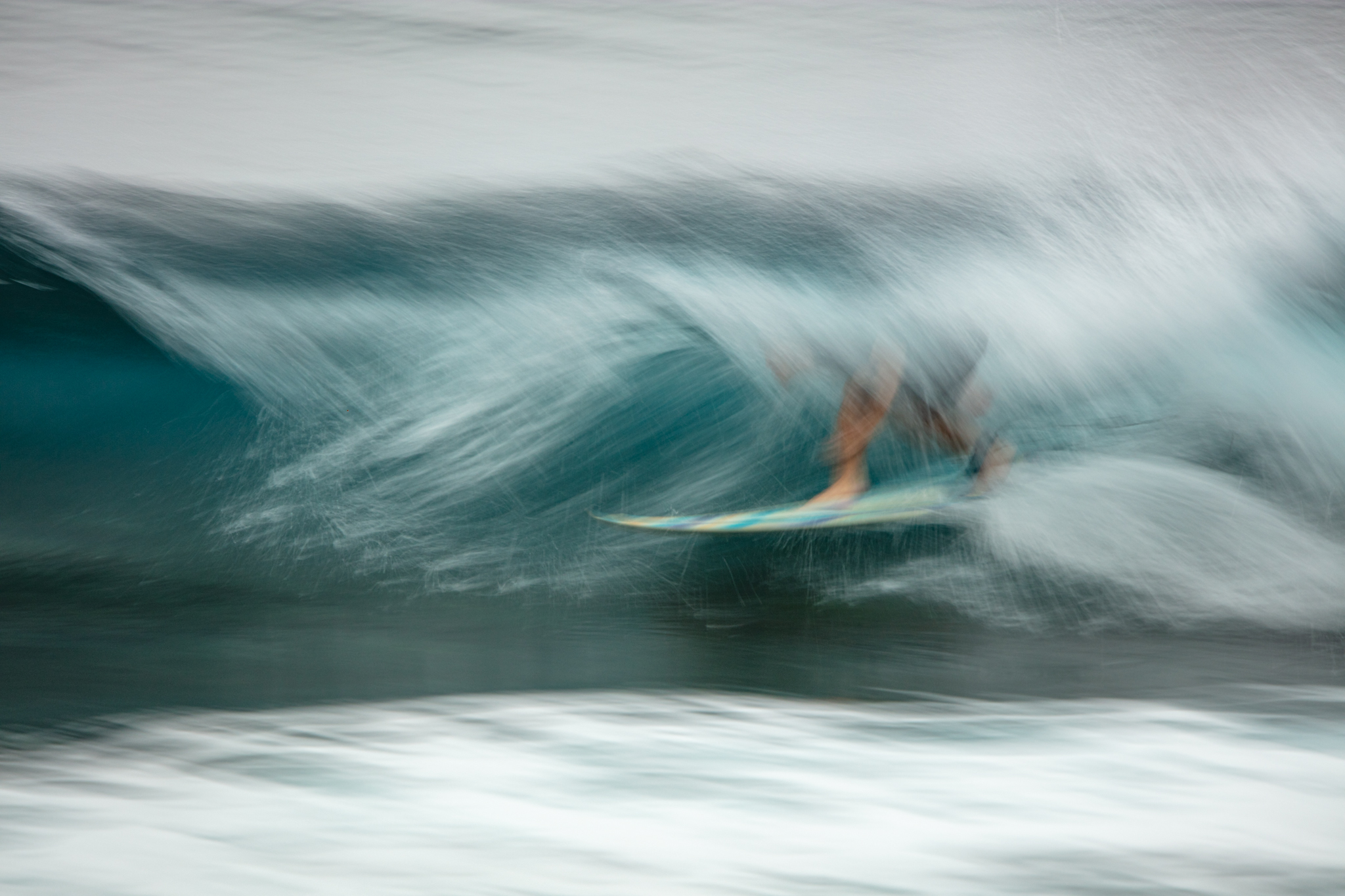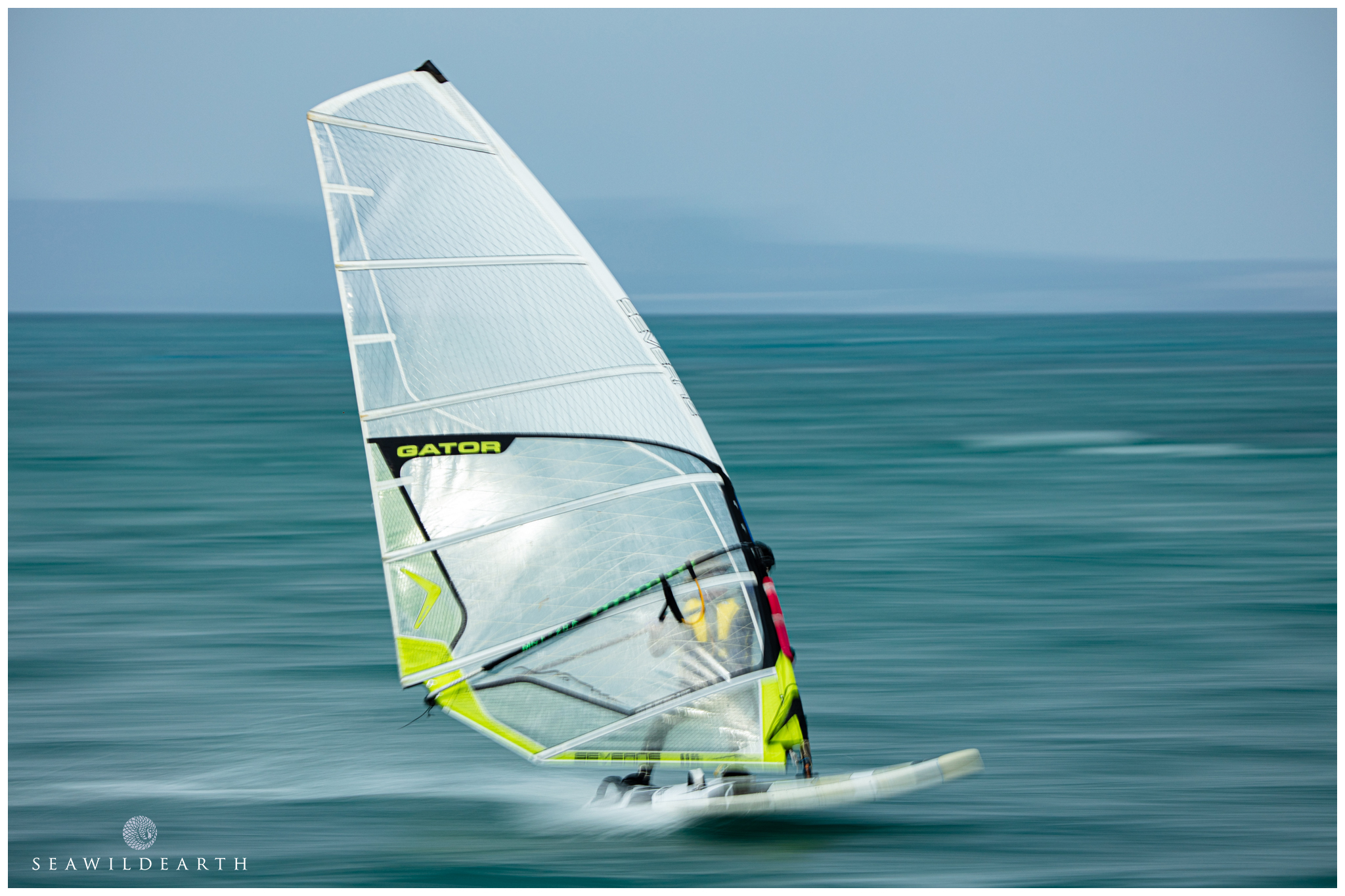Motion Blur in Surf Photography
This simple technique will allow you to create dynamic and exciting imagery of your favorite, motion intensive, sport or pass time.
Motion blur in surf photography creates a sense of impact and conveys the image as both dynamic and adventurous. This can be accomplished very simply with the following technique. There's nothing I like better than standing watching surfers tackle the bigger swells that hit Okinawa through our winter months. The Sunabe Seawall is the best place to be within great shooting distance when using a zoom lens such as my Tamron 150-600 SP 150-600mm F5-6.3. If setting out to create motion blur images there are a few gear considerations one should think about before driving out to the surf break of your choice.

Motion blur allows one to interpret the elongated drops as liquid explosions that create a dynamic sense of speed and impact.
Another issue when shooting such imagery, especially here in Japan, is the general sense that people don't like to be publicly photographed. Using this technique, in some instances, such as above, will allow the wave rider targeted to remain anonymous given the masking qualities the water may have as the motion is rendered. The first thing to think about is that fact you will be using a slower shutter than normal. To get the best blur depends on one thing, how good you may be when panning to match the speed of the surfer on the wave. Panning is when you follow the surfer with the lens to try and match the speed of your movement with the surfers speed.

A new kook to a standard image as a surfer gets 'shacked' on a small wave in Sunabe.
Breathing new life into imagery that has become the standard for such a dynamic sport should always be something a photographer strives for. To convey a sense of 'new' to a style of imagery that allows people to become reinvigorated with imagery of that sport again. What some call 'dragging the shutter' to create motion blur in surf photography is one such way of doing just that.
I'm based in Okinawa so we have a lot of sun, even in the winter months when the waves are hitting at their best. In order to create a motion blur one needs to have diminished light entering the lens to allow for slower shutter speeds. But how is this accomplished in the bright sunshine of Okinawa? The simple answer is with the use of ND Filters. Neutral Density filters are filters of differing opaqueness that act like sunglasses for your camera. They reduce the amount of light entering a lens to the power equal of a range of aperture stops of light depending on the strength of ND filtration one chooses to employ. That in turn is dictated by the effect one wants to create. This is further dictated by the ability of the photographer and their prowess in panning to match the speed of a wave rider.
Given that I'm shooting with this lens means I have to suffer the brunt of accessories pricing as the front element of this lens requires 95mm filters which can be very expensive. I opted to forgo the upper quality echelons of filters instead opting for a still rather pricy Formatt Hitech 95mm Firecrest ND1.8 (6 Stop) filter. Armed with this filter means that now even on a sunny day I can use an aperture of around f11 at ISO100 and then be able to use a shutter speed of around 1/10th in order to adequately expose the shot.
Needless to say this technique is not shot handheld. That would require an ability to pan without any deviation in the lateral plane. Any movement, up or down, during the pan would render additional axial blur that could detract from the impact of the linear blur. Even though we are looking to create blur, a good pan will also allow the shooter to accomplish some elements that could be in focus if they have panned correctly. That focused area may be a foot, the tip of a surfboard, or indeed the face of the surfer. That one aspect of focus will further add an element of attraction to the image, give it some more 'oomph', for want of a better word. I use a Leofoto Ranger LS-324C carbon fiber tripod with the Leofoto LH-55 ball head which is built like a tank and pans a smooth as butter.
At the end of the day the secret to nabbing that great shot is practice, practice, practice. I tend to find that I can nail a shot at 1/20th most of the time but my 'keeper rate' drops very sharply once I go to 1/1oth, but when you nail a shot at that speed it can be pretty awesome. Shooting other water sports as well can result in some pretty cool shots. Windsurfing for example sees an exponential increase with regards to the speeds attained by the riders. This in turn translates into an awesome effect being accomplished with a relatively 'sane' shutter speed of around 1/30th as the shot below clearly shows.

The greater the speed of the subject the greater the shutter speed you can use and still retain a sense of dynamic motion.
As previously stated, your best solution to nailing motion blur in surf photography is simply to keep at it. Practice makes perfect as they say and nothing could be further from the truth in this imaging regard. Depending on the conditions yo are shooting in you can also, or otherwise, use a circular polarizing filter. These additional filters also tend to have an ND effect of reducing between 1 to 1.5 aperture values of light from entering the lens. This may be enough to allow a slight motion blur in surf photography if the ambient conditions are not so hot. With all things, get out there and give it a bash. This technique isn't reserved specifically for surf photography and can be tailored to suit any action related activity from athletics to stunt flying. It's all just a matter of variation. Enjoy.
"Ability determines what you're capable of doing.
Motivation determines whether or not you will even try.
Attitude determines how well you will accomplish it."
Lou Holtz
About the Author
Internationally recognized as a provider of quality mixed media Mark Thorpe is always on the search for captivating content.

Photographer / Cameraman
Mark Thorpe
Emmy Award Winning wildlife cameraman and Internationally published landscape photographer Mark Thorpe has been an adventurer since he could walk! Spending 17yrs as an Underwater Cameraman at the start of his imaging career the highlight of which was being contracted to work with National Geographic. In that role as a field producer and cameraman he's been privy to a mixed bag of hair raising adventures. For some reason he was always selected for projects relating to large toothed marine predators such as Great White and Tiger Sharks, Sperm Whales and Fur Seals. Additionally he has also been active within Southern Africa on terrestrial projects dealing with a wide array of iconic wildlife.
Currently based in Okinawa, Japan he's always on the lookout for his next big adventure. He shares his exploits online with a totally organic social audience. Sponsored by a number of photographic industry manufacturers he is constantly scouring the islands for captivating landscape and 'Oceanscape' compositions. Videography wise he continues to create short photographic tutorial videos as well as content to promote the diversity of wildlife within the Okinawa prefecture as well as a growing lean towards matters of conservation and responsible environmentalism.
Mark has long been an advocate of simplified living. Fortunate enough to have a partner whom shares that vision he is increasingly vocal about what he perceives to be the requirement for man to change his ways. He advocates for people to change and adopt what he calls a true L.I.F.E or Low Impact Focused Existence in order that future generations also have the opportunity to enjoy the natural wonders of this planet to the same extent that his generation has. There is a growing sense of need for such a radical change.
